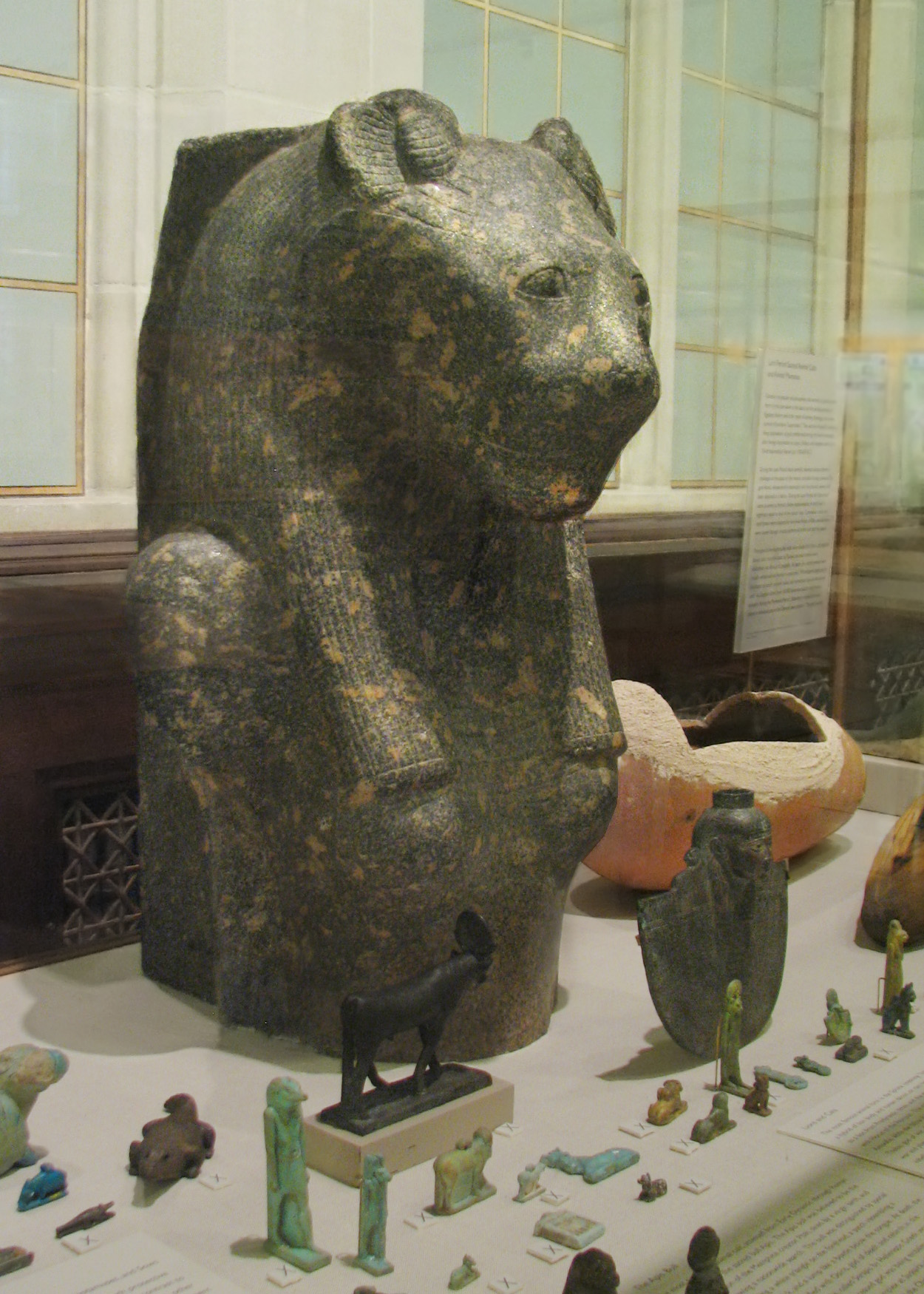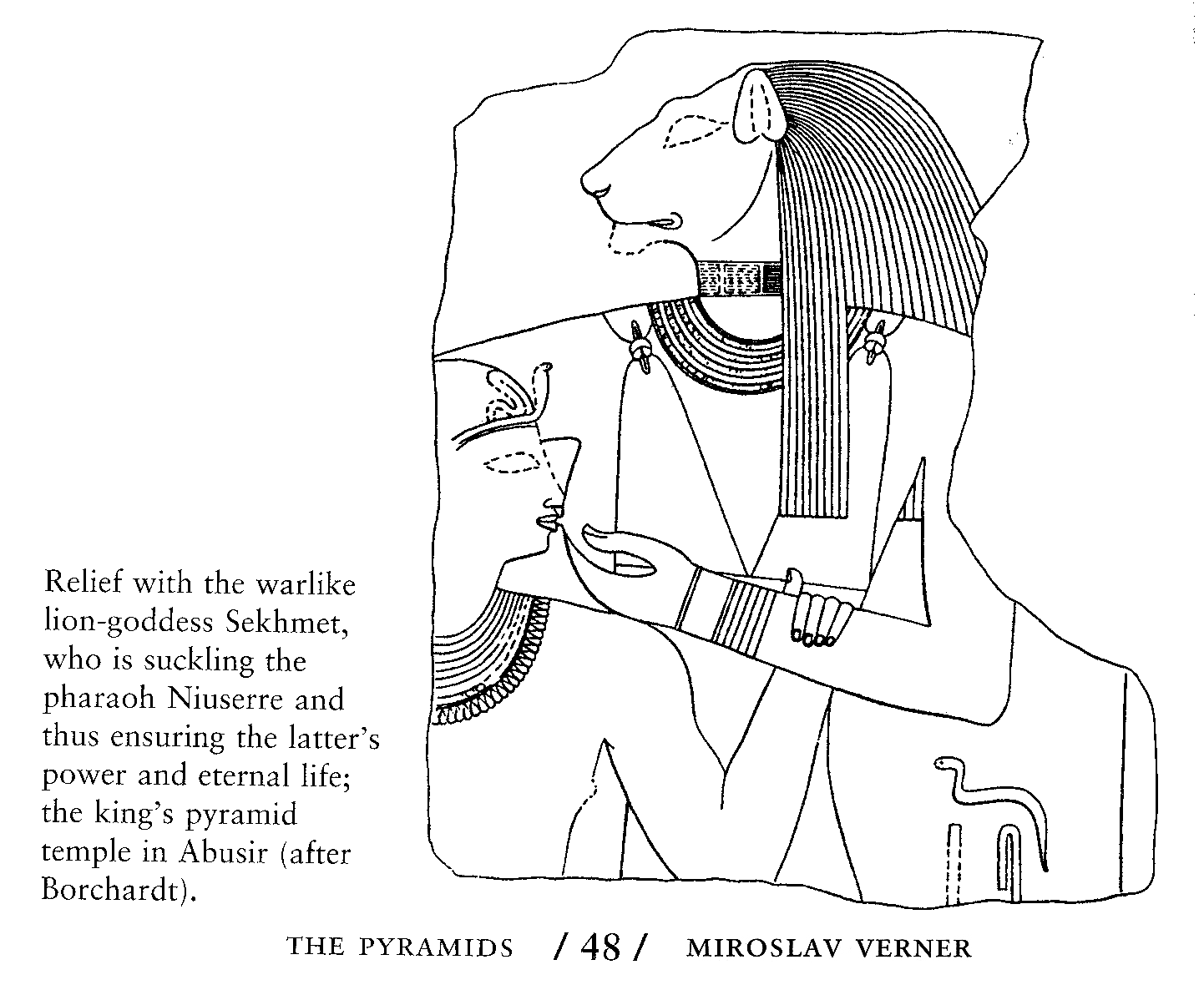
Granodiorite, New Kingdom XVIII, reign of Amunhotep III,ca. 1390-1352 BCE
Photo ©Joan Ann Lansberry, 2010
 Granodiorite, New Kingdom XVIII, reign of Amunhotep III,ca. 1390-1352 BCE Photo ©Joan Ann Lansberry, 2010 |
|
We know this, for there are many such statues, of which this one is a fragment of the whole. The Metropolitan Museum has several, each of them seated on a throne, and the Brooklyn museum has a partial Sekhmet:
"It is thought that the black granite statues of Sekhmet, now scattered in museums throughout the world, once formed a huge monumental litany in stone. Jean Yoyotte has estimated that over seven hundred of them must have once stood in the now ruined funerary temple of Amenhotep III, on the west bank at Thebes, each dedicated to a particular day of the year. Alternately seated and standing, each lioness figure is crowned with a solar disk and fiery cobra snake, and holds either an Ankh-sign of life, or a papyrus sceptre, to symbolize the life-giving greenness of her propitiated state." |
